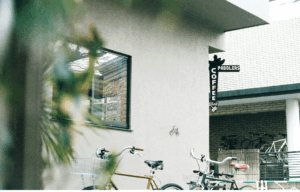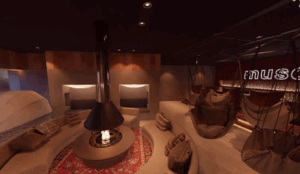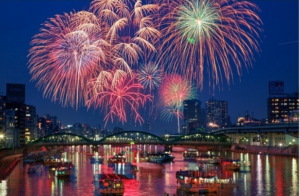Yokohama, Japan’s second-largest city, offers a unique blend of modernity and tradition, with its spacious squares and hidden, narrow alleys. Despite being full of attractions, it often doesn’t receive as much attention as Tokyo, Kyoto, or Osaka. When people do visit Yokohama, they usually stick to Minato Mirai, Chinatown, and the areas in between. But in this post, you’ll discover a side of Yokohama—Tokyo’s “Little Sister”—like never before.
Nogecho
Nogecho, or Noge, is a charming riverside nightlife district known for its retro atmosphere. It’s home to cozy bars, vintage izakayas, and laid-back jazz clubs. Its narrow, lantern-lit streets and the lively Noge Foods Alley are lined with casual eateries serving everything from soba noodles and yakitori skewers to the classic Yokohama-style hayashi beef stew. For entertainment, the Nigiwai-za theater showcases stand-up comedy, vaudeville-style musicals, and other lively Japanese performances.
Sankeien Garden
ankei-en, or “Three Creeks Garden,” is a beautiful traditional Japanese garden in Naka Ward, Yokohama. It opened in 1906 and was created by Tomitaro Hara, a wealthy silk merchant and art lover. Hara personally designed the garden and brought in historic buildings from all over Japan. Structures from Kyoto, Kamakura, and Tokyo now stand among the trees and ponds. Ten buildings are designated Important Cultural Properties, and three are City-designated Tangible Cultural Properties. The garden was damaged during World War II but later carefully restored.
Today, it is managed by the Sankeien Hoshōkai Foundation. On weekends, you might spot couples in traditional wedding attire posing for photos. The peaceful paths, koi ponds, and wooden halls offer a timeless escape. Don’t miss the tea room, where you can enjoy matcha and sweets—or even try whisking your own tea.
Nissan Stadium a.k.a the International Stadium Yokohama
Nissan Stadium in Yokohama is a must-visit for sports and entertainment fans alike. As Japan’s largest stadium, it boasts a seating capacity of over 70,000 and has hosted legendary events like the 2002 FIFA World Cup final and the 2019 Rugby World Cup. Its modern design and state-of-the-art facilities make it an architectural highlight, while its scenic surroundings, with nearby parks and the Tsurumi River, offer a peaceful setting for visitors. Beyond sports, the stadium is also a top venue for concerts, attracting world-class performers. Whether you’re into sports, music, or just sightseeing, Nissan Stadium is a vibrant part of Yokohama’s cultural landscape.
Zoorasia
Zoorasia in Yokohama is a unique zoo that offers an immersive and educational experience for visitors of all ages. Unlike traditional zoos, Zoorasia features spacious, naturalistic enclosures designed to mimic the animals’ natural habitats, creating a more comfortable environment for the wildlife. Divided into themed zones like the African Savannah and Asian Tropical Forest, the zoo allows you to explore a wide range of ecosystems from around the world. With a strong focus on conservation and interactive educational exhibits, it’s an ideal spot for families, offering open spaces, playgrounds, and picnic areas. Whether you’re there to learn, relax, or simply enjoy the animals, Zoorasia promises a fun and enriching day out.
Okurayama Park and Okurayama Memorial
Okurayama Park and Okurayama Memorial in Yokohama offer a serene getaway with a blend of nature, history, and culture. The park is especially stunning during cherry blossom season, perfect for hanami and peaceful strolls, while offering scenic views of the city. Within the park, the Okurayama Memorial Hall, built in 1932 by industrialist Okura Kihachiro, showcases modern Japanese architecture and serves as a cultural hub, hosting exhibitions and concerts. Together, the park’s natural beauty and the memorial’s historical significance make it a unique and worthwhile destination in Yokohama.
Yoneyama Plantation
Yoneyama Plantation in Yokohama is a captivating destination for anyone interested in traditional Japanese agriculture and rural charm. This historic plantation offers a rare glimpse into Japan’s agricultural heritage, featuring meticulously maintained fields and classic farming techniques. Visitors can explore the lush greenery, learn about rice cultivation and other crops, and experience seasonal harvest activities. The plantation also provides a chance to enjoy picturesque landscapes and participate in hands-on workshops, making it an enriching outing for families and those curious about Japan’s agricultural traditions. Its tranquil setting offers a refreshing contrast to the bustling city life, making Yoneyama Plantation a delightful and educational escape.
Hakuraku
Hakuraku in Yokohama is a lesser-known yet charming neighborhood that offers a unique blend of local culture, convenience, and a peaceful atmosphere. It provides an authentic Japanese neighborhood experience, away from the usual tourist crowds. Here you can explore local life through its small, independently owned cafes, bakeries, and shops. While primarily a residential area, Hakuraku holds historical charm, with traditional Japanese houses and temples scattered throughout. It’s especially recommended during spring, when the cherry blossoms bloom in the local parks. Conveniently located between Yokohama and Shibuya stations, Hakuraku maintains a relaxed, peaceful vibe, making it an excellent choice if you are seeking a unique destination to explore.






